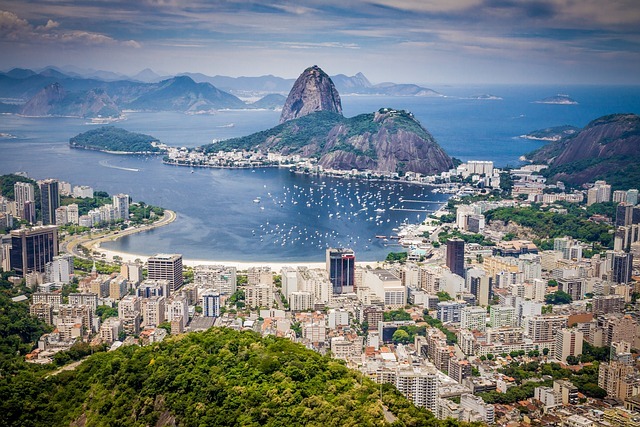In an increasingly competitive environment, tourist destinations must go beyond simple promotion to remain relevant and attract new travelers. Today, tourism communication plays a fundamental role in transforming destinations into iconic places capable of emotionally connecting with travelers and offering unique tourism experiences. The key to achieving this goal lies in developing strategic communication solutions that not only focus on attracting visitors but also on creating a lasting brand identity for the destination.
In this article, we will analyze how innovative tourism communication strategies can transform a destination and consolidate it in the global market.

The Importance of a Tourism Communication Strategy
An effective tourism communication strategy does not only focus on promoting the destination but on creating a narrative that highlights the unique elements of the place. This includes tourism branding, tourism promotion, and the use of strategic communication solutions to connect with the right audience.
Communication must tell a story that resonates with the values of modern travelers, such as authenticity, sustainability, and local culture. This approach allows the destination to be seen not only as a place to visit but as an experience to live.
Tourism Branding: Creating a Unique Identity
Tourism branding is the foundation of any successful communication strategy. It involves creating a unique and attractive identity that reflects the values and essence of the destination. The key is to differentiate the destination from others in the market by highlighting the cultural, natural, and social aspects that make it special.
A strong tourism brand not only attracts travelers but also reinforces the destination’s reputation over the long term. A well-positioned destination becomes a reference point that travelers associate with unforgettable experiences.
How to Implement Tourism Branding:
-
Know Your Target Audience: Define who the travelers are that would most enjoy the tourism experiences the destination offers.
-
Develop a Narrative: Create a story that conveys the essence of the destination, from its history and culture to its landscapes and gastronomy.
-
Create Consistent Design: The logo, colors, typography, and other visual elements should align with the destination’s narrative, projecting a coherent and attractive image.
Strategic Communication Solutions: Innovation as a Driver of Change
Strategic communication solutions are fundamental for transforming a destination. These solutions range from designing digital marketing campaigns for tourism to implementing tourism advertising that resonates with the right audience.
The use of digital platforms is key for modern promotion. Social media, travel blogs, and paid campaigns on search engines are just some of the tools destinations must use to increase their visibility. Moreover, communication should be two-way: it’s not just about delivering messages but also about interacting with travelers, listening to their needs, and adapting strategies according to their interests.
Innovative Communication Strategies:
-
Experiential Marketing: Offering immersive and emotional experiences, such as cultural activities, themed tours, or nature adventures.
-
Impactful Visual Content: Using images and videos that capture the essence of the destination and are attractive enough to be shared on social media.
-
Campaign Automation: Using automation tools to send personalized messages to travelers based on their behavior and interests.
Tourism Promotion: Engaging Travelers
Tourism promotion is an essential element of any tourism communication strategy. Beyond traditional ads, the key is to create a closer relationship between the destination and travelers. An effective promotion campaign not only informs about what can be done at the destination but also awakens the desire to live the experience.
Today, the best tourism advertising campaigns engage travelers through user-generated content, interactive contests, and collaborations with influencers. These strategies not only increase destination visibility but also generate trust and authenticity.
Digital Marketing for Tourism: Global Reach
Digital marketing for tourism offers numerous opportunities to reach travelers worldwide. Digital platforms allow segmentation of audiences by interests, behaviors, and geographic location, maximizing campaign impact.
Digital strategies should also include SEO (search engine optimization), making it easier for travelers to find the destination when searching online. Blogs, YouTube videos, Instagram posts, and content on other platforms can be powerful tools to attract new visitors and enhance tourism content.
Effective Digital Marketing Tools:
-
SEO and Tourism Content: Optimize the destination’s website with relevant keywords and create blogs or travel guides that attract travelers.
-
Social Media Campaigns: Use targeted ads and organic content on platforms like Facebook, Instagram, or TikTok to promote the destination’s experiences.
-
Email Marketing: Send personalized newsletters with special offers, events, and news to a database of potential travelers.
Sustainable Tourism: A Modern and Necessary Approach
Sustainable tourism is not only a trend but a necessity in today’s context. Destinations that prioritize sustainability not only attract conscious travelers but also contribute to the well-being of local communities and environmental preservation. Incorporating sustainable practices in tourism destination management can be a key differentiator to attract an audience that seeks to leave a positive impact.
Sustainability must be an integral part of tourism communication. Campaigns should highlight the destination’s green initiatives, such as renewable energy use, biodiversity conservation, and support for the local economy.

Conclusion: Innovation in Tourism Communication
The transformation of a destination through tourism communication depends on the ability to innovate and adapt to the demands of modern travelers. Strategic communication solutions not only promote the destination but create a complete experience, from the first online interaction to the moment the traveler steps foot in the place.
The future of tourism belongs to destinations that understand the importance of telling an authentic story, offering unique experiences, and committing to sustainability. With a solid communication strategy, any destination can become an iconic place that travelers choose, enjoy, and share.

